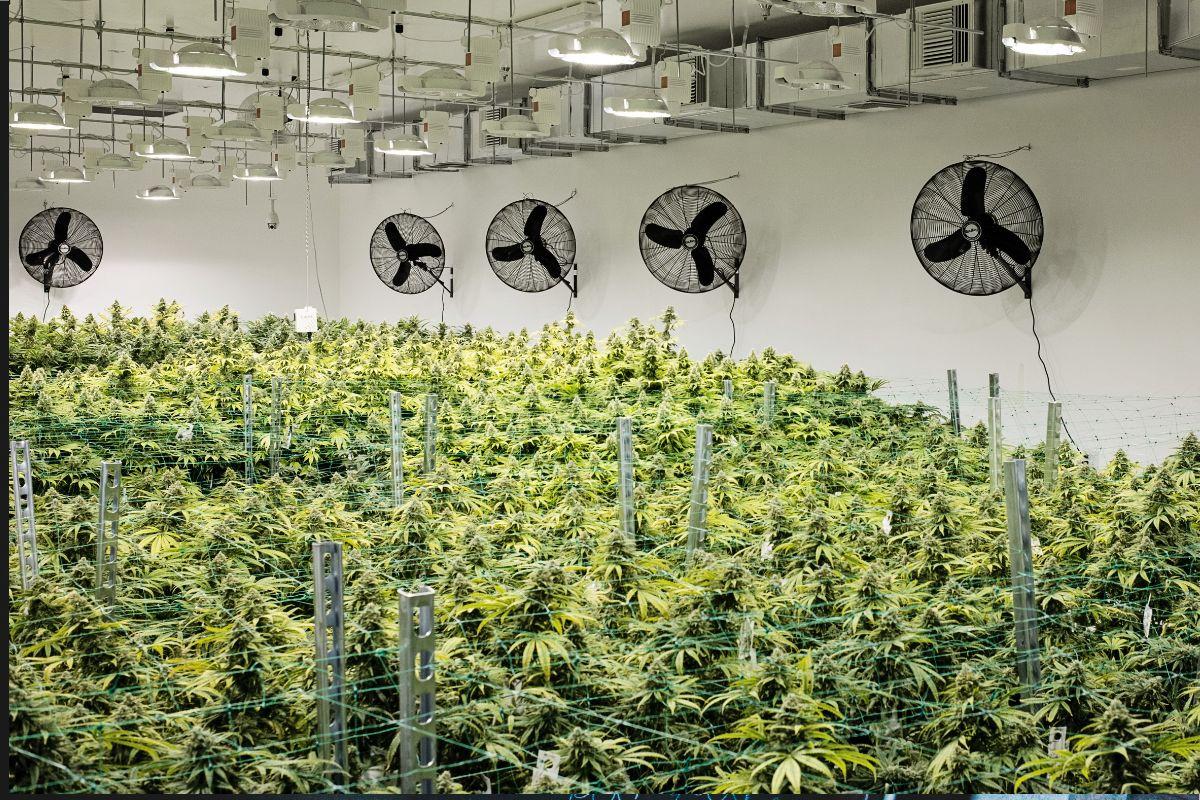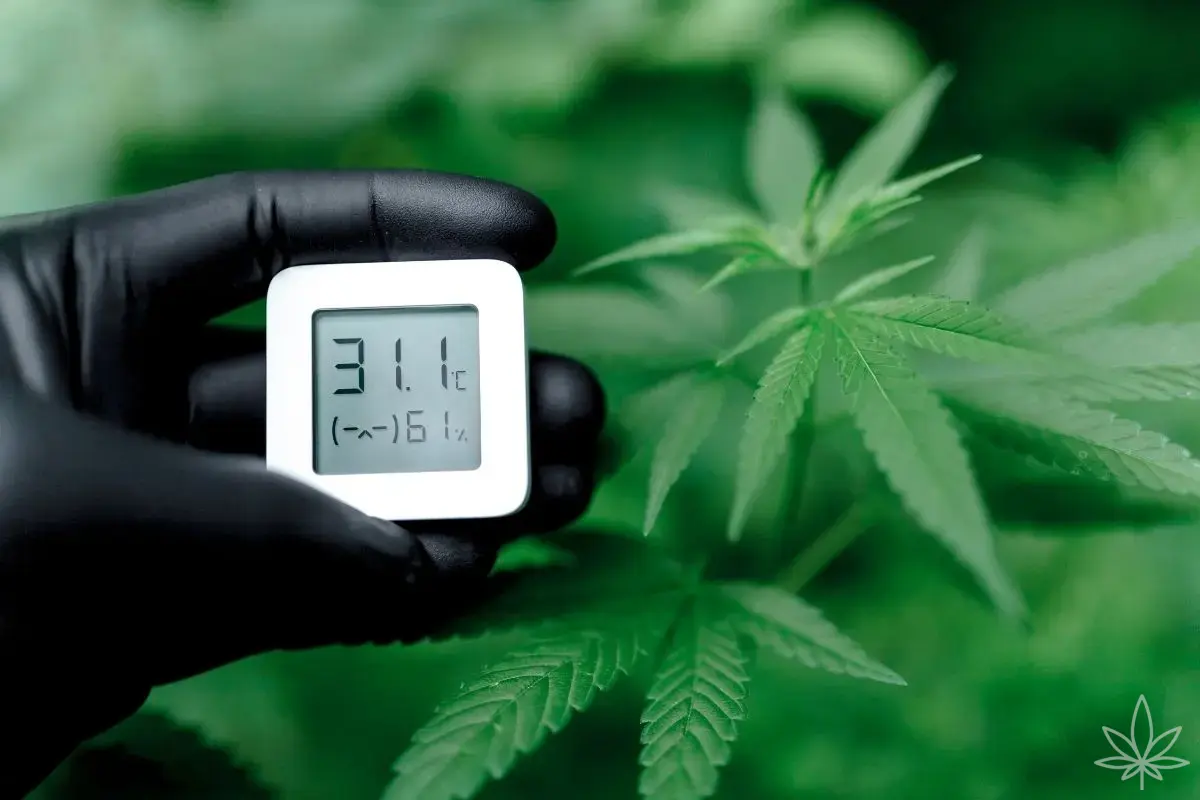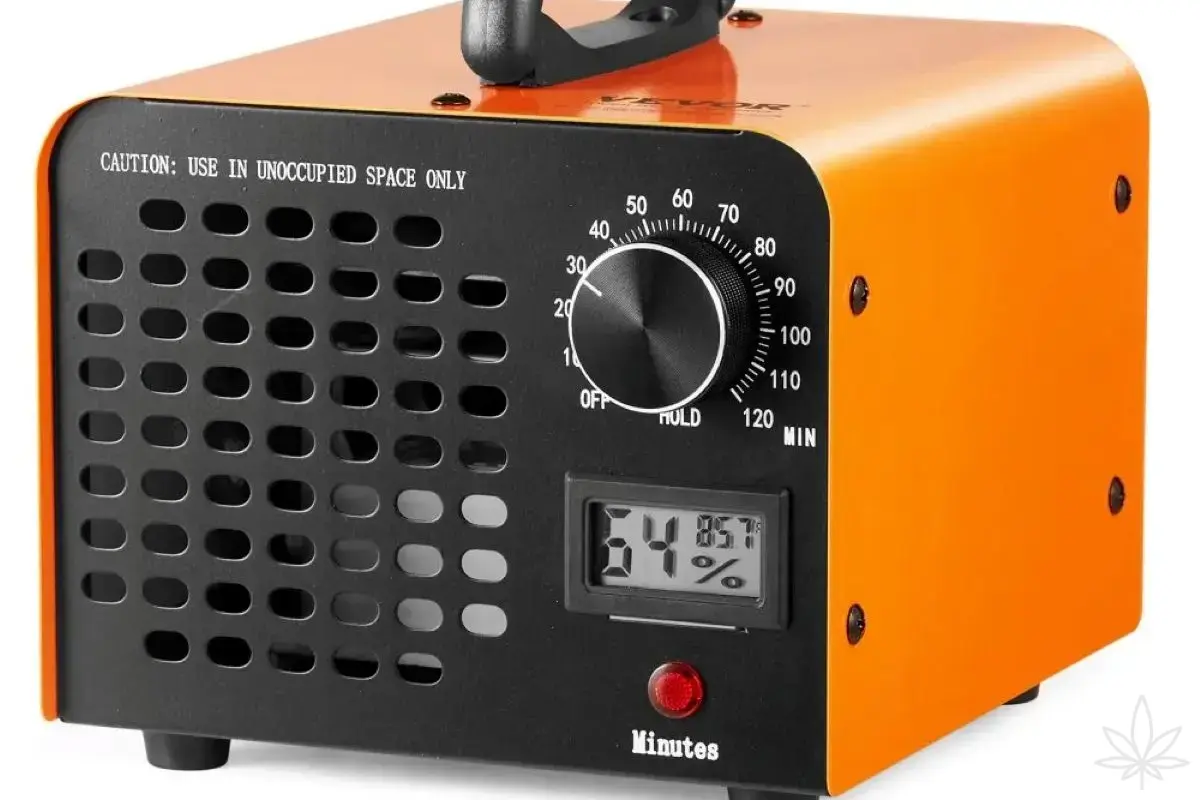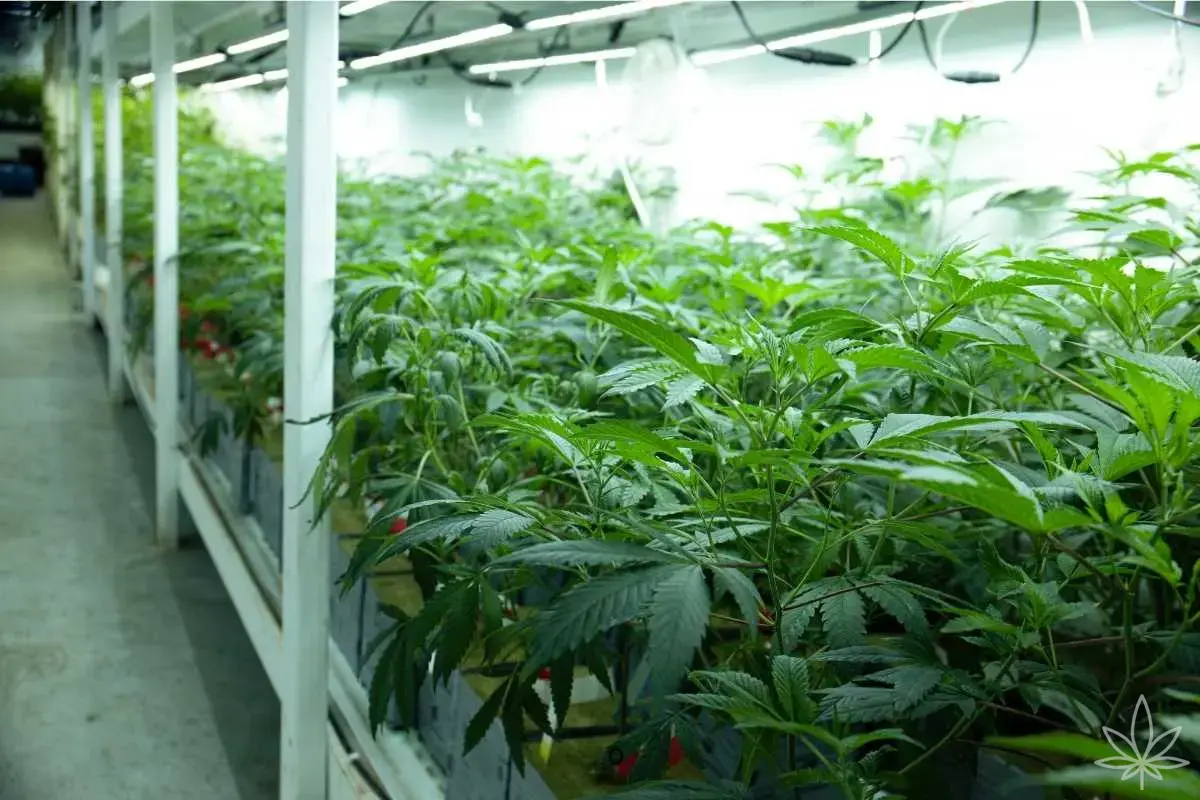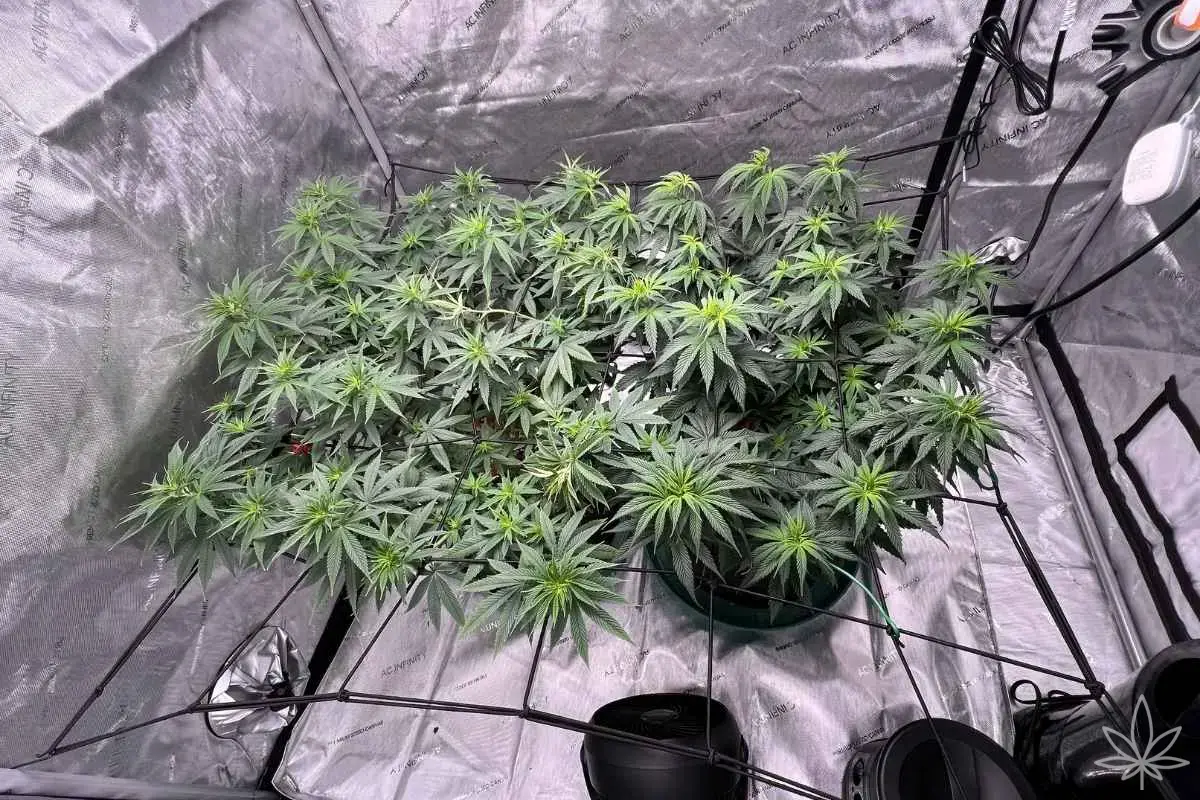Ventilation and air filtration are fundamental elements of any professional indoor cultivation system. Properly selected and installed devices ensure optimal conditions for plants, control temperature and humidity, and effectively neutralize unwanted odors.
Theoretical Basics of Ventilation
Why is Ventilation Key?
Plants grown indoors require constant air exchange for several key reasons:
Temperature control – removes excess heat generated by lighting
Humidity regulation – prevents the development of mold and fungal diseases
Supplying fresh CO₂ – essential for photosynthesis
Odor neutralization – discretion and user comfort
Strengthening stems – gentle air movement stimulates natural growth
Basic Technical Parameters
Air exchange – the minimum recommended air change frequency in a grow room should be 20-40 times per hour (every 1.5–3 minutes).
Room volume – calculated as:
V=L×W×HV = L \times W \times HV=L×W×H
where V = volume (m³), L = length, W = width, H = height
Required fan performance:
Q=V×nQ = V \times nQ=V×n
where Q = performance (m³/h), V = room volume (m³), n = number of air changes per hour (20–40)
Types of Fans and Their Characteristics
Axial Fans
Advantages:
Low noise level
Low energy consumption
Easy installation
Affordable price
Disadvantages:
Lower static pressure
Less effective against high flow resistance
Use: Small and medium grow rooms up to 10 m³
Centrifugal (Radial) Fans
Advantages:
High static pressure
Efficient with high resistance
Can work with long duct runs
Disadvantages:
Higher noise level
Greater energy consumption
Higher price
Use: Large installations, long ducts, high resistance
Technical Parameters of Fans
| Parameter | Unit | Description |
|---|---|---|
| Airflow | m³/h | Air volume moved per hour |
| Static pressure | Pa | Ability to overcome flow resistance |
| Noise level | dB | Fan operating volume |
| Power | W | Power consumption |
| Voltage | V | Power supply (230V AC / 12V DC) |
Carbon Filters – Technology and Application
Principle of Operation
Carbon filters use physical adsorption – odor particles adhere to the surface of activated carbon due to van der Waals forces. Activated carbon has a huge specific surface area (500–1500 m²/g).
Types of Activated Carbon
Coconut shell carbon:
Highest quality
Lasts 12–18 months
Superior adsorption effectiveness
Wood-based carbon:
Medium quality
6–12 months lifespan
Lower price
Bituminous coal carbon:
Lowest quality
Short lifespan (3–6 months)
Cheapest
Parameters of Carbon Filters
| Parameter | Description |
|---|---|
| Capacity | Maximum air volume [m³/h] |
| Diameter | Filter casing diameter [mm] |
| Length | Filter length [mm] |
| Carbon weight | Amount of activated carbon [kg] |
| Lifespan | Expected longevity [months] |
Equipment Selection – Formulas and Calculations
Step 1: Calculate Room Volume
For a 2.4m × 1.2m × 2.0m room:
V=2.4×1.2×2.0=5.76 m3V = 2.4 \times 1.2 \times 2.0 = 5.76 \, \text{m}³V=2.4×1.2×2.0=5.76m3
Step 2: Determine Required Performance
With 30 air exchanges per hour:
Q=5.76×30=172.8 m3/hQ = 5.76 \times 30 = 172.8 \, \text{m}³/\text{h}Q=5.76×30=172.8m3/h
Recommended with a safety margin: 200–250 m³/h
Step 3: Account for Flow Resistance
Basic resistances:
Carbon filter: 50–150 Pa
Ducts: 10–30 Pa/m
Elbows and bends: 20–50 Pa/each
Vents: 20–40 Pa
Example total resistance:
Filter: 100 Pa
2 m duct: 40 Pa
Two 90° elbows: 60 Pa
Vent: 30 Pa
Sum: 230 Pa
Step 4: Select the Fan
The fan must provide 200-250 m³/h at 230 Pa resistance.
Technical Solutions and Installation
Schematic 1: Basic Setup
Air from the grow room
Intake fan
Carbon filter
Exhaust fan
To the outside
Schematic 2: Optimal Setup
Air is drawn from the room through the carbon filter
Then passes to the exhaust fan
Optionally through a silencer
Directed outside
Additionally, an internal circulation fan ensures air movement around the plants
Installing the Carbon Filter
Filter Position:
Inside the room – best effectiveness
Outside – saves space, but less effective
Orientation:
Vertical – optimal for most filters
Horizontal – allowed if properly supported
Connections:
Aluminum or PVC ducts
Stainless steel clamps
Rubber gaskets at connections
Controls and Automation
Basic controllers:
Thermostat – temperature control
Hygrostat – humidity control
Timer – programming cycles
Advanced controllers:
Climate controllers with sensors
PID controllers
Smart home systems
Leading Manufacturers of Ventilation Equipment
Fans
Soler & Palau (Spain)
Series: TD Silent, Mixvent
Features: high quality, quiet operation
Price: mid-high
S&P (Systemair)
Series: RVK, K-Line
Features: professional, durable
Price: high
Vents (Ukraine/Germany)
Series: VKO, VKOM, TT
Features: good price-to-quality ratio
Price: medium
Blauberg (Germany)
Series: Turbo, Centro, Iso-Mix
Features: modern design, efficient
Price: mid-high
Carbon Filters
Can-Filters (Canada)
Series: Can-Original, Can-Lite
Features: coconut carbon, long lifespan
Price: high
Prima Klima (Czech Republic)
Series: K2600, ECO
Features: good price-to-quality ratio
Price: medium
PhreshFilters (USA)
Series: Phresh Filter
Features: coconut carbon, compact
Price: mid-high
Rhino Pro (UK)
Series: Rhino Pro Carbon Filter
Features: high quality, various sizes
Price: medium
Example Sets for Different Room Sizes
Small Room Set (up to 3 m³)
Fan: Vents TT 125mm – 220 m³/h
Filter: Prima Klima K2600 150mm – 240 m³/h
Ducts: 125mm Aluminum, 2 m
Cost: ~600–800 PLN
Medium Room Set (3–8 m³)
Fan: S&P TD-350/125 Silent – 350 m³/h
Filter: Can-Lite 425 m³/h
Ducts: 125mm Aluminum, 3 m
Controllers: Thermostat + Hygrostat
Cost: ~1200–1500 PLN
Large Room Set (8–15 m³)
Fan: Systemair RVK 150mm – 470 m³/h
Filter: Phresh Filter 500 m³/h
Ducts: 150mm insulated, 4 m
Controller: GSE climate controller
Cost: ~2000–2500 PLN
Maintenance and Servicing
Fans
Clean every 3 months
Replace bearings every 2–3 years
Check electrical connections
Carbon filters
Check efficiency monthly
Replace carbon every 12–18 months
Clean pre-filter every 2 weeks
Ducts and Connections
Check for leaks every 6 months
Clean interior annually
Replace when damaged
Most Common Mistakes and How to Avoid Them
Undersized capacity
Always include a 20–30% safety margin
Take reduced efficiency over time into account
Incorrect installation
Avoid long, winding duct runs
Support heavy filters properly
Neglecting maintenance
Check and clean equipment regularly
Don’t delay replacing worn-out parts
False economy
Don’t skimp on the carbon filter quality – it’s foundational
Cheap equipment can cause higher operating costs long-term
Properly selected and installed ventilation with carbon filtration is an investment in the long-term success of any indoor grow. By following the above tips and choosing reputable manufacturers, you guarantee yourself years of reliable system performance.

